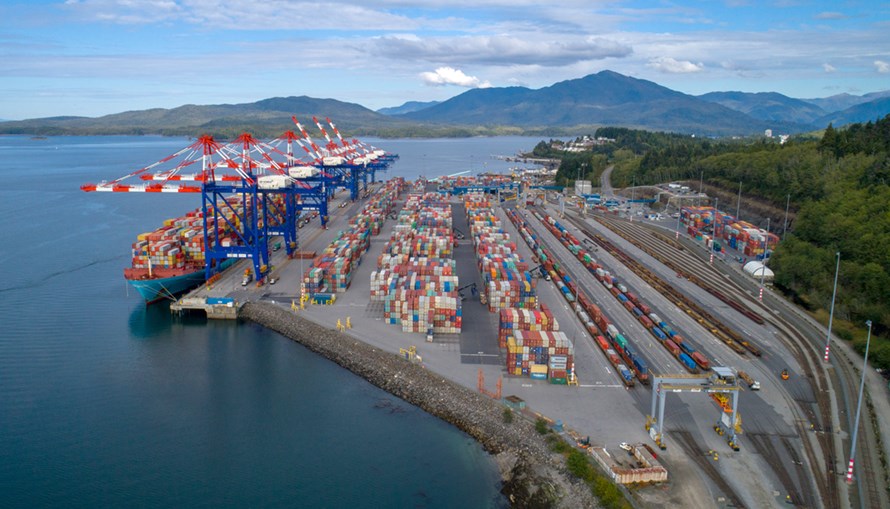An Exxon-Mobile Corp.- led consortium has pulled back from a planned liquefied natural gas (LNG) plant at Prince Rupert and Ottawa is selling the expanding Ridley Terminal, but the northwest B.C. city’s bustling port expects an even bigger share of gas exports.
The alternate decision by LNG Canada to proceed with its $14 billion export terminal at Kitimat will add to the record-breaking tonnage now handled at the Prince Rupert docks, said Brian Friesen, vice-president of trade development and communications at the Port of Prince Rupert.
“The project will create natural gas liquids such as propane that will need market access, which is where it will have a positive effect on Prince Rupert,” he said.
AltaGas of Calgary and Netherlands-based tank storage company Royal Vopak are nearing completion of a new Ridley Island propane export facility, Friesen noted, that will be ready this spring as the first propane export facility on the west coast of Canada. AltaGas expects the facility will offload 50 to 60 CN rail cars of propane per day to export into Asia.
The Ridley Terminal is already undergoing a $280 million expansion as it moves to meet global demand for metallurgical coal used in steelmaking. Last year the Ridley port saw a 40 per cent increase in shipments of metallurgical coal, to 5.6 million tonnes, while exports of thermal coal, used for electrical production, was up 6 per cent from 2017 to 2.1 million tonnes.
Thermal coal shipments have been dampened at the Fraser Surrey Docks after the Port of Vancouver cancelled a permit for a $15 million thermal coal terminal this year. The controversial project would have had a capacity of shipping four million tonnes of U.S. coal annually to markets in Asia. The plan had drawn fire from environmentalists and municipal governments in Metro Vancouver.
Marc Dulude, president and CEO of Ridley Terminals Inc., doubted the thermal coal shipments could transition north to Prince Rupert. “We are not really equipped to serve the U.S. coal market,” he said.
A sale of the Ridley Terminals, the only government-owned terminal at Prince Rupert, is in the works and that could delay any such decisions, Dulude noted.
In November 2018, the Canada Development Investment Corp. (CDEV) announced it was calling for private bids for 90 per cent of Ridley Terminals. The remaining 10 per cent of the shares would be transferred to the Lax Kw’alaams Band and the Metlakatla First Nation at the close of the sale, according to a government release.
Dudley referred all requests for information on the potential sale to the CDEV. “I can’t really comment,” he said. CDEV referred Western Investor questions to adviser Macquarie Capital, which also refused comment.
Ridley’s expansion shares in the next phase of growth by the Port of Prince Rupert and global stevedore DP World that will increase annual throughput capacity at Canada’s second-largest container terminal to 1.8 million TEUs (twenty-foot equivalent units) when complete in 2022.
The expansion comes as the port set back-to-back record years in 2017-18, with 26.7 million metric tonnes handled last year, up 10 per cent from a year earlier. As a comparison, the Port of Vancouver handles 3.3 million TEUs annually, and annual tonnage throughput of around 141 million tonnes.
Still, the Port of Prince Rupert is a thriving concern in an area of B.C. that has seen other major projects stopped or stalled in the past few years. The port generates 3,100 direct jobs and 5,000 indirect jobs in the Prince Rupert area, according to the Prince Rupert Port Authority.



